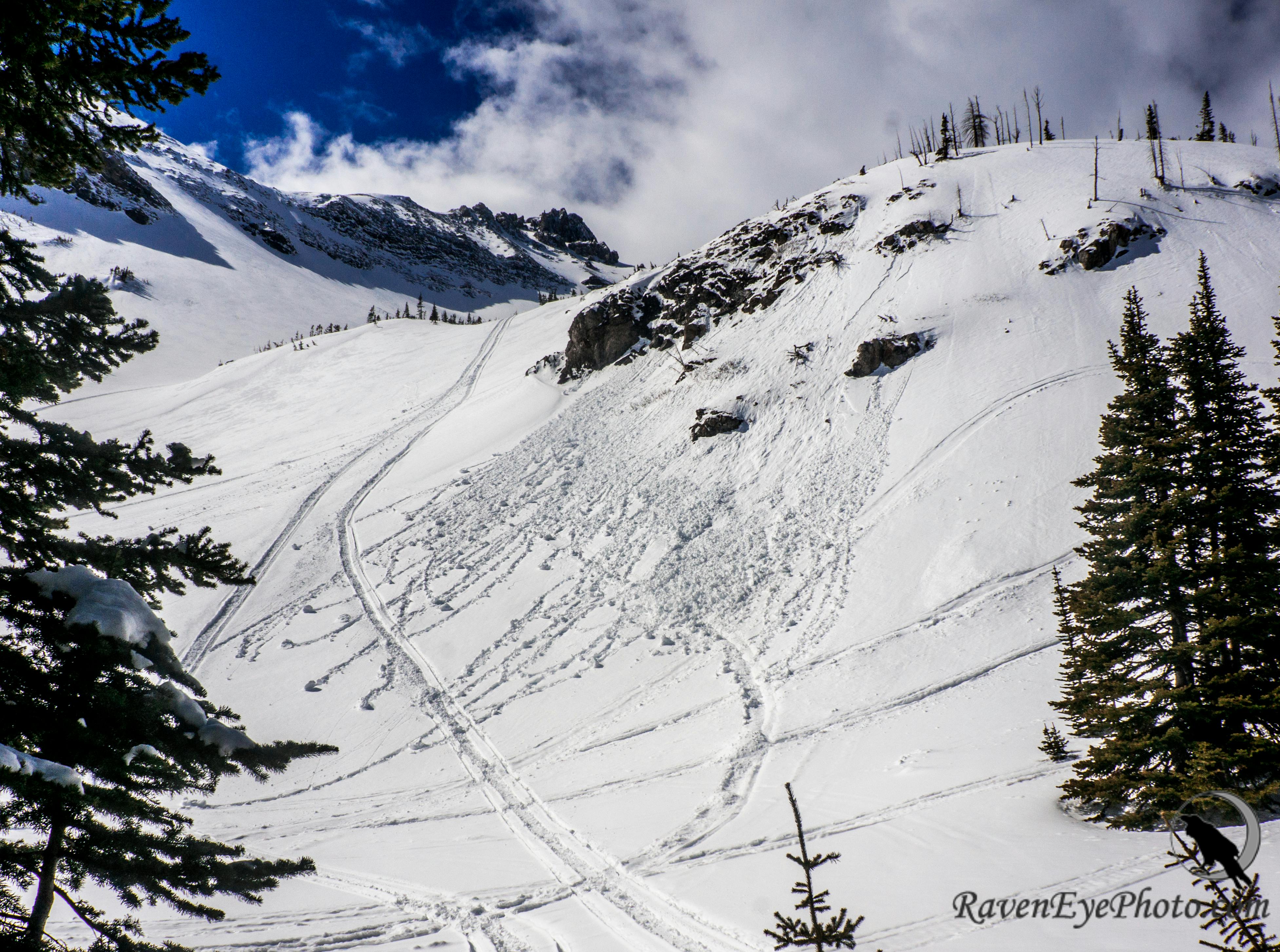
- Credit
- Raven Eye Photography
Solar warming is warming caused by radiation from the sun. As a result of solar warming, east to west aspects often see increased rates of snowpack settlement and more frequent melting of snow at the surface. This can result in accelerated slab formation, the creation of surface crusts, and wet loose avalanches.
Even when air temperatures are below freezing, solar radiation can bring snow to its melting point. When air temperatures are above zero, solar radiation can greatly increase snow melt.
The exposure of slopes to the sun changes over each day and throughout winter according to their incline and aspect. Slopes that saw little solar warming early in winter experience substantially more in spring as the sun shines on the snow for longer periods and from higher up. Slopes receiving direct sunlight are most affected by solar warming.
Being aware of the sun’s path and anticipating the effects of solar warming is an important part of decision-making in avalanche terrain.
Photo: Snow pinwheels down a slope, a result of solar warming. By Mark Bender